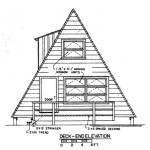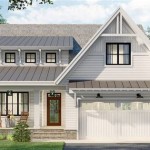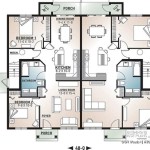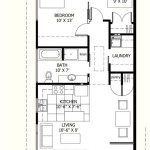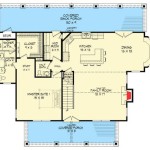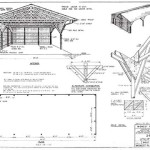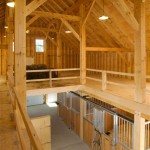Mother-In-Law House Floor Plans: A Comprehensive Guide
The concept of multi-generational living has seen a resurgence in recent years, driven by factors such as rising housing costs, the desire for closer family ties, and the increasing need for elder care. A key element in facilitating this lifestyle is a well-designed mother-in-law suite, also known as an accessory dwelling unit (ADU) or in-law apartment. The floor plan is paramount to the success of this living arrangement, ensuring both privacy and proximity for all parties involved. This article explores the essential aspects of planning and designing effective mother-in-law house floor plans.
Key Considerations Before Planning
Before diving into specific floor plan options, it's crucial to address several fundamental questions. These considerations will shape the overall design and ensure the final product meets the needs of all occupants.
First, local zoning regulations must be thoroughly investigated. Many municipalities have specific rules regarding ADUs, including size restrictions, setback requirements, and parking stipulations. Failing to comply with these regulations can result in costly revisions or even the inability to legally occupy the unit.
Second, the specific needs and preferences of the intended occupants should be carefully considered. This includes factoring in mobility limitations, dietary requirements, and personal preferences for layout and amenities. Open communication between all parties is essential to ensure the design is functional and comfortable for everyone.
Third, budget considerations play a significant role in determining the scope and complexity of the project. Establishing a realistic budget upfront will help prioritize features and materials, preventing cost overruns and ensuring the project remains financially viable. This also involves researching the cost of materials, labor, and permits in the specific area.
Finally, long-term planning is crucial. Consider whether the mother-in-law suite might be used for other purposes in the future, such as a rental unit or accommodation for adult children returning home. Designing with flexibility in mind can increase the long-term value and utility of the space.
Common Mother-In-Law Suite Floor Plan Options
The ideal floor plan for a mother-in-law suite depends heavily on the existing structure and the available space. Several common layouts can be adapted to different situations.
One popular option is an attached ADU, which is physically connected to the main house but has its own separate entrance. This arrangement offers a balance of privacy and accessibility, allowing for easy interaction between residents while maintaining individual living spaces. Attached ADUs can be created by converting an existing garage, adding an extension to the house, or repurposing an existing room or set of rooms.
A detached ADU, also known as a backyard cottage or granny flat, provides the highest level of privacy and independence. This option involves building a completely separate structure on the property. Detached ADUs are ideal for larger properties and can be designed to complement the architectural style of the main house. The separation provides a greater sense of autonomy for both the primary residents and the occupants of the ADU.
An internal ADU involves converting an existing space within the main house, such as a basement or attic, into a self-contained unit. This option is generally the most cost-effective, as it avoids the need for new construction. However, it can be challenging to create a truly separate living space within an existing structure, especially in older homes.
Regardless of the chosen layout, certain elements are essential for a functional and comfortable mother-in-law suite. These include a private entrance, a fully equipped kitchen or kitchenette, a bathroom, a bedroom, and a living area. Attention should be paid to soundproofing and insulation to minimize noise transfer between the main house and the ADU.
Essential Design Elements for Optimal Functionality
Beyond the overall layout, specific design elements can significantly enhance the functionality and comfort of a mother-in-law suite.
Accessibility is paramount, especially if the intended occupants have mobility limitations. This includes features such as wider doorways, grab bars in the bathroom, and a zero-entry shower. Ramps or elevators may be necessary for units on upper floors. Universal design principles should be incorporated to create a space that is accessible to people of all ages and abilities.
Adequate storage space is essential for maintaining a clutter-free and organized living environment. Built-in storage solutions, such as shelves, cabinets, and closets, can maximize space utilization. Consider vertical storage options to make the most of limited square footage.
Natural light and ventilation are crucial for creating a bright and airy living space. Large windows and skylights can bring in natural light, while strategically placed vents and fans can improve air circulation. Proper ventilation is especially important in kitchens and bathrooms to prevent moisture buildup and mold growth.
Privacy is another key consideration. Soundproofing walls and ceilings can minimize noise transfer between the main house and the ADU. Strategically placed windows and landscaping can provide visual privacy. A separate outdoor space, such as a patio or deck, can offer a private retreat for the occupants of the ADU.
A well-designed kitchen or kitchenette is essential for independent living. The kitchen should include a refrigerator, a stove or cooktop, a sink, and ample counter space. Consider appliances that are energy-efficient and easy to use. A microwave oven is a valuable addition, especially for those with limited cooking abilities.
The bathroom should be designed with safety and accessibility in mind. Grab bars should be installed near the toilet and shower. A walk-in shower is preferable to a bathtub for those with mobility issues. Non-slip flooring can help prevent falls. Adequate lighting is essential for visibility.
Finally, consider incorporating smart home technology to enhance convenience and safety. Features such as smart lighting, smart thermostats, and smart security systems can improve energy efficiency, comfort, and peace of mind. Voice-activated controls can be particularly helpful for those with mobility limitations.
Addressing Privacy and Independence in Floor Plan Design
Achieving a balance between privacy and proximity is a central challenge in designing mother-in-law suites. The floor plan should facilitate independent living while allowing for easy interaction and support when needed.
The placement of the entrance is critical. A separate, private entrance is essential for creating a sense of independence. The entrance should be easily accessible and well-lit. Consider adding a covered porch or awning to provide shelter from the elements.
Soundproofing and visual barriers are crucial for maintaining privacy. Insulating walls and ceilings can minimize noise transfer. Solid-core doors can also help reduce noise. Strategically placed windows and landscaping can provide visual privacy from the main house and neighboring properties.
Separate utility meters for electricity and water can provide occupants of the ADU with greater control over their expenses and consumption. This also fosters a sense of independence and responsibility.
Consider creating a physical separation between the main house and the ADU. This can be achieved through landscaping, fencing, or a separate outdoor space. A patio, deck, or garden can provide a private retreat for the occupants of the ADU.
Clear communication and established boundaries are essential for maintaining a harmonious living arrangement. Regular family meetings can help address any issues or concerns that may arise. Open communication can foster mutual respect and understanding.
Legal and Regulatory Considerations
Beyond zoning regulations, several other legal and regulatory considerations are relevant to mother-in-law suite design.
Building codes must be strictly adhered to. This includes requirements for structural integrity, fire safety, and electrical and plumbing systems. A licensed contractor should be consulted to ensure compliance with all applicable codes.
Property taxes may be affected by the addition of a mother-in-law suite. Consult with the local tax assessor to determine the potential impact on property taxes.
Insurance coverage should be reviewed and updated to reflect the addition of the ADU. This may require obtaining additional liability coverage.
Rental agreements may be necessary if the mother-in-law suite is intended to be rented out. A written agreement can help protect the rights and responsibilities of both the landlord and the tenant.
Homeowners' association (HOA) rules may restrict the construction or use of ADUs. Check with the HOA to ensure compliance with all applicable rules and regulations.
By carefully considering these legal and regulatory aspects, potential problems can be avoided, and a compliant and legally sound mother-in-law suite can be created.

Mother In Law National Home Builders

Mother In Law Suite Floor Plans Garage Apartment

In Law Suite House Floor Plans Mother Apartment

Homes With Mother In Law Suites

Plan 65862 Tuscan Style House Floor Plans With 2091 Sq Ft 3 Be

Small Mother In Law Suite Floor Plans Home Design Cottage Apartment

Designing And Building New Homes With Mother In Law Suites David Weekley

Traditional Home With Mother In Law Suite 35428gh Architectural Designs House Plans

Image Result For Detached Mother In Law Suite House Plans Multigenerational One Story Family

22x24 Guest House Plan Tiny In Law Apartment

